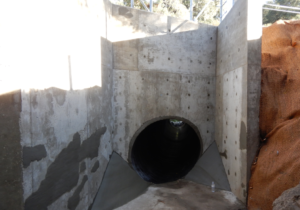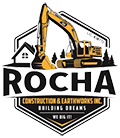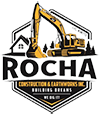Culverts play a crucial role in managing water flow beneath roads, railways, and trails. However, over time, these structures can deteriorate due to age, corrosion, or inadequate design, compromising safety and causing environmental damage. In this comprehensive guide, we’ll explore the importance of culvert replacement, the key considerations involved, and essential questions to ask before undertaking such a project.
Why Culvert Replacement Matters:
Culverts are vital components of transportation and drainage systems, facilitating the safe passage of water underneath infrastructure. Here’s why replacing deteriorating culverts is essential:
Safety: A failing culvert can lead to road or railway collapses, posing significant safety hazards to motorists, pedestrians, and commuters. Timely replacement ensures the integrity of transportation networks and prevents accidents or disruptions.
Flood Prevention: Functional culverts prevent water from pooling on roads or properties, reducing the risk of flooding during heavy rainfall or snowmelt events. Properly sized and maintained culverts help mitigate water-related disasters and protect surrounding areas from damage.
Erosion Control: Deteriorated culverts can cause soil erosion around infrastructure, compromising its stability and longevity. By replacing failing culverts, erosion can be mitigated, preserving the integrity of roads, embankments, and adjacent properties.
Environmental Protection: Culverts serve as vital wildlife corridors, allowing the passage of aquatic species and maintaining ecosystem connectivity. Replacement projects should prioritize designs that minimize ecological disturbance and promote habitat conservation.

Key Considerations for Culverts Replacement:
Replacing culverts requires careful planning, engineering expertise, and environmental considerations. Here are essential factors to address during the replacement process:
Hydraulic Analysis: Conducting a thorough hydraulic analysis helps determine the appropriate size, shape, and material of the new culvert. Factors such as peak flow rates, sediment transport, and scour potential must be considered to ensure optimal performance and longevity.
Site Assessment: Assess the site conditions, including soil stability, groundwater levels, and existing infrastructure. Site surveys and geotechnical investigations help identify potential challenges and inform the design and construction approach.
Environmental Impact: Evaluate the project’s environmental impact on water quality, aquatic habitat, and wildlife corridors. Implement erosion and sediment control measures, and consider habitat enhancement opportunities to minimize ecological disturbance.
Regulatory Compliance: Obtain necessary permits and approvals from regulatory agencies, such as the Department of Transportation, Environmental Protection Agency, and local authorities. Compliance with environmental regulations and permit conditions is essential to avoid delays and penalties.
Construction Methods: Select appropriate construction methods based on site conditions, accessibility, and environmental sensitivity. Consider factors such as open-cut excavation, trenchless technologies, and precast culvert installation to minimize disruption and accelerate project completion.
Questions to Ask Before Culverts Replacement:
- What is the condition of the existing culvert, and why is replacement necessary?: Understanding the underlying issues prompting replacement helps determine the scope and urgency of the project.
- What are the anticipated project costs, and how will they be funded?: Clarify the estimated costs, funding sources, and potential financing options for the replacement project. Budgetary considerations play a significant role in project feasibility and planning.
- What is the proposed timeline for the replacement project?: Discuss the project schedule, including design, permitting, construction, and post-construction monitoring. Timely completion is essential to minimize disruptions and address safety concerns promptly.
- How will the replacement project impact traffic, nearby residents, and the environment?: Communicate potential impacts and mitigation measures to stakeholders, including commuters, residents, environmental groups, and regulatory agencies. Transparency and community engagement foster understanding and support for the project.
- What measures will be implemented to ensure the new culvert’s longevity and resilience?: Inquire about design features, construction techniques, and maintenance plans aimed at maximizing the new culvert’s lifespan and performance.
- How will the project address environmental concerns and protect sensitive habitats?: Discuss environmental mitigation measures, habitat restoration efforts, and compliance with regulatory requirements to minimize adverse effects on ecosystems and wildlife.
- Who will oversee the project, and how will communication be maintained throughout the process?: Identify the project manager or point of contact responsible for coordination, communication, and stakeholder engagement. Clear lines of communication promote collaboration and ensure project success.
In conclusion, culvert replacement is a critical infrastructure investment that enhances safety, mitigates flooding, and protects the environment. By addressing key considerations and asking essential questions, stakeholders can ensure the successful planning and execution of culvert replacement projects, safeguarding communities and ecosystems for years to come.

